Step into a world filled with wonder and fascination as we embark on a mesmerizing journey through the enchanting tales of the Andromeda Constellation. This mythical constellation holds a rich history steeped in ancient lore and captivating stories, intertwined with the marvels of our universe. From its mythological origins to its astronomical significance, Andromeda has captivated the hearts and minds of individuals for centuries. Join us as we delve into the depths of this celestial wonder, exploring its cultural significance in art and literature, its modern interpretations in popular culture, and the awe-inspiring experience of stargazing at this celestial spectacle. Prepare to be enchanted by the mythical allure of the Andromeda Constellation.
Contents
- The Andromeda Constellation: A Brief Overview
- The Mythological Origins of Andromeda
- The Andromeda Constellation in Astronomy
- Andromeda in Art and Literature
- Andromeda: Modern Interpretations
- The Andromeda Constellation Today
- Conclusion
-
Frequently Asked Questions
- What is the significance of the “W” shape in the Andromeda Constellation?
- How far away is the Andromeda Galaxy from Earth?
- Can the Andromeda Galaxy be seen with the naked eye?
- What other constellations are near Andromeda?
- Is the Andromeda Galaxy larger than the Milky Way?
- Are there any other galaxies in the Andromeda Constellation?
- How did the Andromeda Galaxy get its name?
- Is the Andromeda Galaxy on a collision course with the Milky Way?
- Can the Andromeda Constellation be seen from both northern and southern hemispheres?
- Is the Andromeda Galaxy visible to the naked eye without any optical aid?
- References
-
Frequently Asked Questions
- What are the main stars in the Andromeda Constellation?
- What is the significance of the Andromeda Galaxy?
- Is Andromeda visible to the naked eye?
- What is the mythological story behind Andromeda?
- How many stars are there in the Andromeda Galaxy?
- Are there any famous artworks inspired by the Andromeda Constellation?
- Can the Andromeda Galaxy be seen with a telescope?
- How far away is the Andromeda Galaxy?
- Has Andromeda been referenced in popular culture?
- What is the best time to view the Andromeda Constellation?
- References
- Read More
The Andromeda Constellation: A Brief Overview
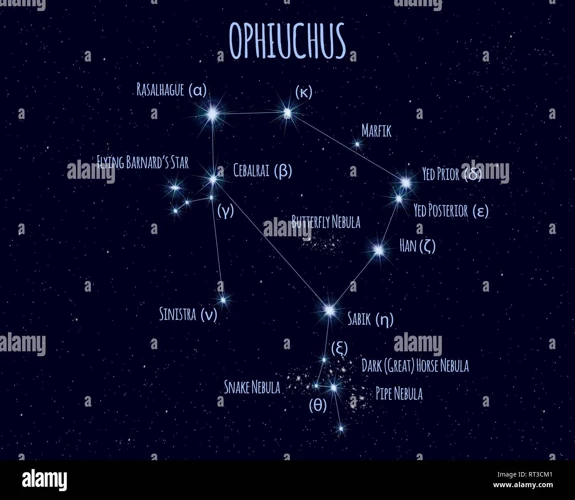
The Andromeda Constellation, located in the northern sky, is one of the most recognizable and captivating constellations in our night sky. With its prominent “W” shape, it has captured the imagination of astronomers and stargazers alike for centuries. Andromeda is named after the princess Andromeda from Greek mythology, known for her beauty and unfortunate fate. It is part of the larger Perseus constellation, which surrounds her, depicting the Greek hero who saved her from the sea monster Cetus. This constellation holds significance not only in mythology but also in astronomy, as it is home to the Andromeda Galaxy, the closest spiral galaxy to our Milky Way. This galaxy, also known as Messier 31, is a vast collection of stars, gas, and dust, and is visible to the naked eye on clear nights. It is a popular target for astronomers and astrophotographers alike, offering a glimpse into the vastness and beauty of our cosmic neighborhood. The Andromeda Constellation invites us to marvel at the wonders of the universe and sparks our curiosity to explore beyond the boundaries of our world. So let us journey deeper into the captivating tales and astronomical significance of the Andromeda Constellation.
The Mythological Origins of Andromeda

The mythological origins of Andromeda are deeply rooted in ancient Greek mythology. According to the myth, Andromeda was the daughter of King Cepheus and Queen Cassiopeia of Ethiopia. Queen Cassiopeia boasted about her daughter’s unparalleled beauty, which angered the sea god Poseidon. In his wrath, Poseidon sent a sea monster called Cetus to terrorize the kingdom. In an attempt to appease Poseidon and save their kingdom, King Cepheus and Queen Cassiopeia consulted an oracle who advised them to sacrifice Andromeda to the sea monster. Andromeda was chained to a rock by the seashore, awaiting her tragic fate.
However, fate had a different plan in store for Andromeda. The hero Perseus, who had recently slain the Gorgon Medusa, happened to stumble upon Andromeda and the sea monster. Enchanted by her beauty, Perseus fought and slayed the monster, rescuing Andromeda and claiming her as his wife. The union of Andromeda and Perseus symbolizes the triumph of courage and love over adversity and serves as a reminder of the power of perseverance.
This captivating myth has inspired countless artists, writers, and storytellers throughout history. It highlights themes of heroism, redemption, and the transformative power of love. Andromeda’s mythological origins serve as a testament to the enduring power of ancient storytelling and how these tales continue to captivate our imaginations even to this day. To explore more about the differences between Western and Vedic zodiacs, you can refer to our informative article Understanding the Differences between Western and Vedic Zodiacs.
Ancient Greek Mythology: Andromeda and Perseus
In the realm of ancient Greek mythology, the tale of Andromeda and Perseus emerges as one of the most captivating and enduring stories. Andromeda, the daughter of King Cepheus and Queen Cassiopeia, possessed unrivaled beauty that invoked the envy of the sea god Poseidon. As a punishment for her mother’s arrogance, Poseidon unleashed the fearsome sea monster Cetus upon the kingdom. Helpless and on the verge of destruction, Andromeda was chained to a rock by the ocean as an offering to appease the monster. It is during this moment of desperation that Perseus, the courageous son of Zeus, appeared on the scene. Equipped with his magical weapons, including the winged boots, a mirrored shield, and a mighty sword, he swooped down from the skies to rescue Andromeda. With the aid of Medusa’s severed head, which could turn enemies to stone, Perseus defeated the monstrous Cetus. Andromeda and Perseus found love in each other’s arms, and the couple eventually married. This ancient Greek myth not only showcases the power of love and heroism but also the intertwined relationship between the gods and mortals in Greek mythology. It serves as a reminder of the enduring themes of courage, sacrifice, and the triumph of good over evil that continue to captivate audiences to this day.
The Andromeda Myth in Other Cultures
The captivating myth of Andromeda extends beyond Greek mythology and finds its place in various other cultures around the world. In Hindu mythology, Andromeda is associated with the story of Sarama, the celestial nymph who gets abducted by the demon Kalanemi. Similarly, in Ethiopian mythology, Andromeda is linked to the tale of Abaro, a princess who is rescued by the hero Mikael. The Andromeda myth also has connections in Chinese folklore, where it is associated with the legend of the Weaving Maid and the Cowherd, represented by the stars Vega and Altair respectively. These cultural interpretations highlight the universal themes of love, bravery, and triumph over adversity that permeate the Andromeda myth. Each culture adds its own unique nuances and symbolism to the story, making it a truly global mythological phenomenon. The enduring popularity of Andromeda’s myth across different cultures speaks to its timeless appeal and the universal human fascination with heroic tales and romantic quests. It serves as a reminder that the human imagination knows no bounds and can create mythical narratives that span continents and centuries. To explore more fascinating aspects of mythology and astrology, you can read our insightful guide on the astrological houses.
The Andromeda Constellation in Astronomy
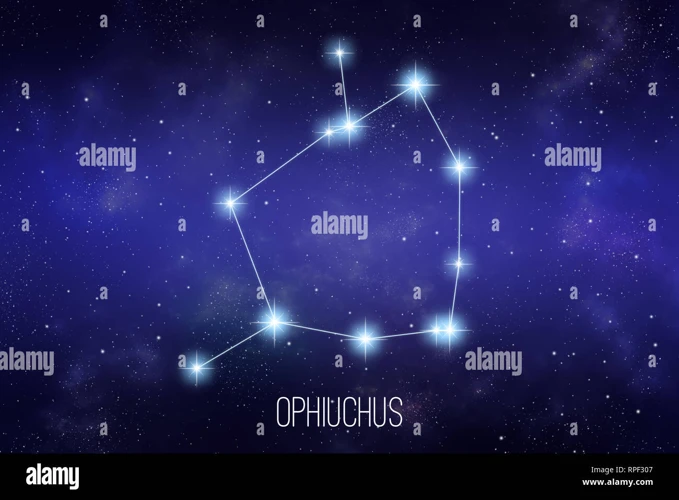
The Andromeda Constellation holds great significance in the field of astronomy, offering a multitude of fascinating celestial objects to explore. Within this constellation, there are numerous stars and nebulae that have caught the attention of astronomers throughout history.
Stars: One of the notable stars in Andromeda is Alpheratz, also known as Alpha Andromedae. It is a binary star system consisting of two stars orbiting around a common center of mass. Another prominent star is Mirach, which is visible to the naked eye and serves as a useful navigational reference point for stargazers.
Nebulas: Andromeda is home to several stunning nebulae that are a delight for astronomers. The Andromeda Nebula, also known as Messier 31, stands out as one of the most remarkable objects in the night sky. It is a spiral galaxy similar to our own Milky Way and is visible as a smudge of light in the constellation. Another noteworthy nebula is the Blue Snowball Nebula (NGC 7662), which gets its name from its blue-tinted appearance when viewed through a telescope.
Additionally, the Andromeda Constellation has been the site of significant astronomical discoveries. One of the most groundbreaking findings is the acknowledgement that the Andromeda Galaxy (Messier 31) is actually approaching our own Milky Way at a relatively fast rate. This discovery challenged the prevailing belief that galaxies were fixed and led to a deeper understanding of the dynamic nature of the universe.
Exploring the Andromeda Constellation in astronomy opens up a world of celestial wonders, from stars that guide our observations to breathtaking nebulae that inspire further exploration. As we delve deeper into the mysteries of this cosmic realm, we gain a greater appreciation for the vastness and beauty of the universe that surrounds us. So, let us continue our journey through the realms of art, literature, and modern interpretations, where the wonders of the Andromeda Constellation continue to captivate our imaginations.
Stars and Nebulas in Andromeda
When we venture into the vastness of the Andromeda Constellation, we encounter a multitude of captivating stars and mesmerizing nebulae. One of the most prominent stars in Andromeda is Mirach, a red giant that shines brightly in the night sky. Another noteworthy star is Almach, a multiple star system consisting of at least four stars, which appear as a colorful double star when observed through a telescope. As we explore further, we encounter the Andromeda Nebula, also known as Messier 31 or the Andromeda Galaxy. This spiral galaxy is the largest member of the Local Group, a collection of galaxies that includes our Milky Way. It is an awe-inspiring sight, visible as a hazy patch in the night sky. In addition to the Andromeda Galaxy, we also find other celestial wonders such as the Blue Snowball Nebula (NGC 7662) and the Triangulum Galaxy (Messier 33), which both contribute to the cosmic splendor of the Andromeda Constellation. These celestial jewels offer a glimpse into the vastness and diversity of our universe, reminding us of the wonders that lie beyond our earthly realm. As we gaze upon the stars and nebulae of Andromeda, we are humbled by the vastness and beauty of the cosmos, igniting a sense of curiosity and a desire to explore the celestial wonders that await us.
Astronomical Discoveries in Andromeda
Astronomical discoveries in the Andromeda Constellation have provided us with fascinating insights into the depths of our universe. One of the most significant discoveries is the Andromeda Galaxy itself, also known as Messier 31. This spiral galaxy is a treasure trove of information, offering astronomers a wealth of knowledge about galactic evolution. Its proximity to our Milky Way has enabled detailed studies, revealing its structure, composition, and interactions with neighboring galaxies. Scientists have discovered numerous star clusters within Andromeda, ranging from young, hot, blue stars to older, cooler, and red stars. These stellar clusters have provided crucial evidence about the formation and evolution of galaxies. Additionally, the Andromeda Galaxy is home to a supermassive black hole at its center, which has been the subject of extensive research. These astronomical discoveries in Andromeda continue to expand our understanding of the universe and pave the way for future explorations and revelations. By unraveling the mysteries of this celestial wonder, astronomers unlock new insights into the cosmic tapestry that surrounds us.
Andromeda in Art and Literature
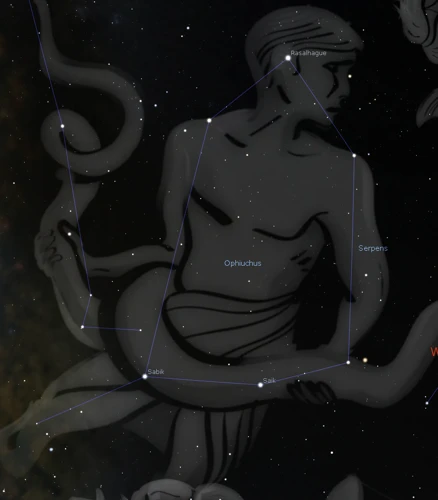
Andromeda’s captivating tale has not only left its mark on mythology and astronomy but has also inspired countless artists and writers throughout history. In art, Andromeda is often depicted as a beautiful princess chained to a rock, awaiting her rescue by the heroic Perseus. Paintings and sculptures from various time periods have captured this dramatic scene, showcasing the vulnerability and strength of Andromeda. One notable painting is “Perseus Rescuing Andromeda” by Peter Paul Rubens, a magnificent masterpiece that showcases the intense emotions of the narrative. In literature, Andromeda’s story has been adapted and retold in various forms. The works of poets such as Ovid, Euripides, and Apollonius of Rhodes delve into the mythology surrounding Andromeda, immersing readers in her tragic destiny and the triumphant adventures of Perseus. This enthralling narrative has also influenced modern literature, with authors incorporating Andromeda’s story as a source of inspiration for their own imaginative universes. From classic art masterpieces to contemporary novels, Andromeda’s tale continues to captivate the hearts and minds of artists and audiences alike, showcasing the enduring power of myth and the influence of the celestial world on human creativity.
Andromeda in Paintings and Sculptures
Andromeda, the mythological princess from the Andromeda Constellation, has long been a subject of inspiration for artists throughout history. Her story of bravery and rescue has been depicted in numerous paintings and sculptures, each capturing her captivating beauty and the dramatic events surrounding her. One notable example is the painting “Perseus Rescuing Andromeda” by Italian artist Piero di Cosimo. This masterpiece portrays the intense moment of Perseus swooping in on his winged horse, Pegasus, to save Andromeda from the clutches of the sea monster. The artist skillfully depicts the vulnerability of Andromeda and the heroic nature of Perseus, creating a sense of movement and drama in the artwork. Another renowned work inspired by Andromeda is the sculpture “Andromeda Chained to a Rock” by French artist Auguste Rodin. This sculpture captures the anguish and vulnerability of Andromeda, chained and defenseless, awaiting her inevitable fate. The intricate details and emotional intensity in Rodin’s sculpture evoke a deep sense of empathy in the viewer. These artistic representations of Andromeda not only immortalize her mythical tale but also serve as a testament to the enduring power of art to convey the complexity of human emotions and narratives. Through these paintings and sculptures, the enchanting story of Andromeda continues to captivate and inspire audiences to this day.
Depictions of Andromeda in Literature
Depictions of Andromeda in literature have fascinated readers throughout the ages, capturing the beauty and tragedy of her story. One notable example is the epic poem “Metamorphoses” by Roman poet Ovid. In this literary masterpiece, Andromeda’s plight is vividly described as she is chained to a rock as sacrifice to appease the wrath of the sea god Poseidon. However, her life takes a compelling turn when the hero Perseus arrives to save her, his daring exploits transforming her destiny. Another notable work featuring Andromeda is the play “Andromache” by French playwright Jean Racine. Set after the fall of Troy, Andromache, wife of the fallen hero Hector, becomes a captive and is forced into a marriage with Neoptolemus. The play delves into themes of love, loyalty, and the struggles faced by Andromache as she clings to her noble character. Andromeda’s character has also found its way into modern literature, such as in Madeleine Miller’s “Circe,” where she is portrayed as a prominent figure in the world of Greek mythology. These various literary depictions highlight the enduring fascination with Andromeda’s story and her enduring place in the realm of literature. So, whether she is portrayed as a damsel in distress awaiting rescue or as a resilient heroine, the character of Andromeda continues to captivate readers with her timeless allure.
Andromeda: Modern Interpretations
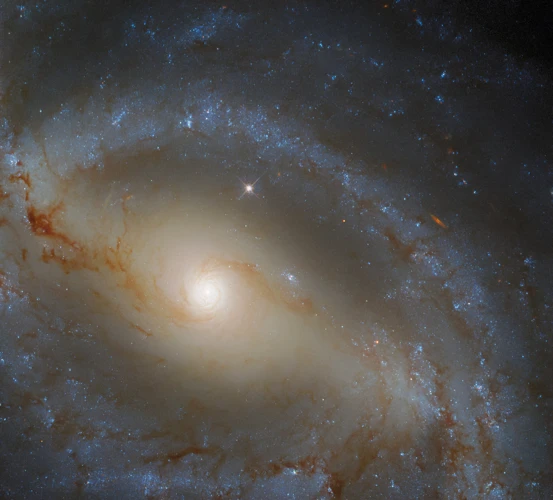
Andromeda, the captivating constellation of ancient lore, continues to inspire modern interpretations in popular culture. This celestial wonder has woven its way into various forms of media, capturing the imagination of artists, writers, filmmakers, and musicians. In popular culture, Andromeda often represents themes of resilience, beauty, and courage in the face of adversity. In literature, Andromeda is a symbol of strength and bravery, serving as a muse for writers to explore themes of heroism and the triumph of good over evil. The story of Andromeda’s rescue by Perseus has been adapted into numerous movies and TV shows, bringing the mythical tale to life on the silver screen. The enduring popularity of this celestial figure has also found its way into the world of music, with artists drawing inspiration from the captivating tales surrounding Andromeda. The constellation has become a symbol of hope and inspiration in our modern world, reminding us of the timeless power of mythology and its ability to shape our cultural landscape. So whether it’s through literature, cinema, or music, Andromeda continues to inspire and captivate audiences, keeping the allure of this mythical constellation alive in our modern interpretations.
Andromeda in Popular Culture
Andromeda, with its captivating mythology and astronomical beauty, has also found its place in popular culture. References to Andromeda can be found in various forms of media, including literature, music, and films. In literature, the Andromeda constellation often symbolizes courage, heroism, and the triumph of good over evil. It has served as inspiration for countless authors, who have woven its mythical elements into their stories. Andromeda’s tale of rescue and adventure has also been adapted into several movies and TV shows, captivating audiences with its enduring themes of love and bravery. One notable example is the 1981 film “Clash of the Titans,” which is based on Greek mythology and features the story of Perseus and Andromeda. In the world of music, Andromeda has been immortalized in song lyrics, creating a poetic connection between the celestial wonders above and the human experiences below. Whether in literary works, cinematic creations, or musical compositions, Andromeda continues to inspire and enchant, reminding us of the enduring power of mythology in our modern world. It serves as a testament to how ancient narratives can shape and influence our collective imagination across generations.
Andromeda in Movies and TV Shows
Andromeda’s captivating tales have not only inspired ancient mythology and art but have also found a place in the modern world of movies and TV shows. The allure of the Andromeda Constellation has been featured in various science fiction and fantasy productions, transporting audiences into imaginative realms. One notable example is the 1961 film “The Three Worlds of Gulliver,” where the protagonist, Lemuel Gulliver, travels to the kingdom of Brobdingnag and encounters the Princess of Lilliput, who is named Andromeda. Another popular portrayal comes from the TV series “Stargate Atlantis,” where the hero travels through a Stargate to the Pegasus Galaxy, encountering a race of beings known as the Wraith who reside in the Andromeda Galaxy. These depictions, along with many others, showcase the enduring fascination with the Andromeda Constellation and its connection to other worlds and civilizations. Through movies and TV shows, the mythical and mystical aspects of Andromeda continue to captivate our imaginations, taking us on thrilling adventures across the cosmos.
The Andromeda Constellation Today
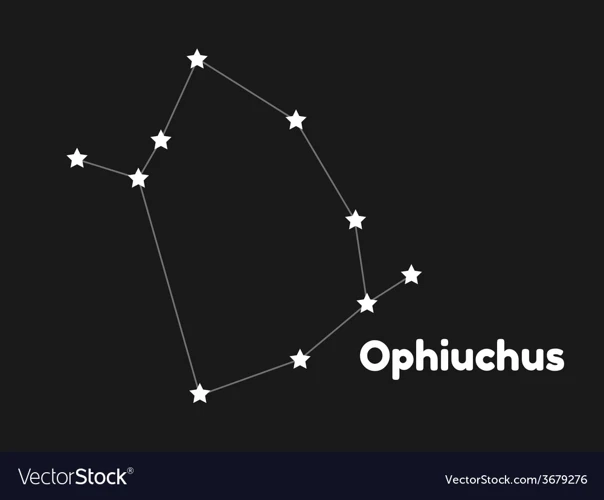
The Andromeda Constellation continues to captivate sky gazers and astronomers today, offering a mesmerizing celestial experience. For those who enjoy stargazing, the Andromeda Constellation is a must-see. Its distinctive “W” shape is easily recognizable, especially in areas with minimal light pollution. The best time to observe Andromeda is during the autumn months in the Northern Hemisphere, when it is highest in the sky. Finding Andromeda is relatively simple: locate the constellation Cassiopeia, which looks like a sideways “W,” and follow the line created by its last two stars inward. This will lead you towards the Andromeda Constellation. Once you have found it, take a moment to appreciate its beauty and the mythological stories it represents. For astrophotography enthusiasts, the Andromeda Constellation offers a feast for the lens. The Andromeda Galaxy, also known as Messier 31, is a prominent target. Its spiral arms and core make it a captivating subject for long-exposure photography. With the advent of modern technology, photographers can capture breathtaking images of Andromeda, showcasing its cosmic splendor. Whether you’re an astronomy enthusiast or simply curious about the wonders of our universe, exploring the Andromeda Constellation today is an awe-inspiring experience that allows us to connect with the myths of ancient civilizations and the vastness of our cosmos. So go out, find a dark spot on a clear night, and let the enchanting wonders of the Andromeda Constellation unfold before your eyes.
Stargazing and Viewing Andromeda
Stargazing and viewing the Andromeda Constellation is a truly awe-inspiring experience for astronomy enthusiasts and casual observers alike. To locate Andromeda in the night sky, it’s helpful to find the easily recognizable Great Square of Pegasus first, as Andromeda extends from one side of the square. Look for the distinctive “W” shape formed by the brightest stars in the constellation, which represents the princess Andromeda herself. With a clear, dark sky away from light pollution, you can spot the Andromeda Galaxy, also known as M31, with the naked eye. It appears as a blurry patch of light, but with binoculars or a telescope, its spiral arms and core become more visible. The best time to observe Andromeda is during the fall and winter months in the Northern Hemisphere. The Andromeda Galaxy is approximately 2.5 million light-years away from us, making it the most distant celestial object visible to the naked eye. Its massive size and proximity allow us to marvel at the scale and beauty of our universe. So grab your telescope or binoculars, find a dark spot, and get ready to witness the celestial wonder of Andromeda. Don’t miss the opportunity to witness this cosmic masterpiece firsthand.
Andromeda in Astrophotography
Andromeda in astrophotography is a sight to behold. The Andromeda Galaxy, also known as Messier 31, presents an incredible opportunity for photographers and astronomers to capture its awe-inspiring beauty. Given its proximity to Earth and its size, spanning over 220,000 light-years, it has become a popular target for astrophotographers. To capture the delicacy and intricacy of this celestial wonder, photographers often use specialized equipment such as telescopes, cameras with long exposure capabilities, and filters to enhance its features. The Andromeda Galaxy’s spiral arms, dust lanes, and central bulge make for breathtaking images that reveal the sheer magnitude and complexity of our neighboring galaxy. With advanced imaging techniques and post-processing software, photographers can bring out the vibrant colors and intricate details, showcasing the beauty and splendor of Andromeda in a way that leaves viewers in awe. These astrophotographs not only serve as stunning visual representations but also contribute to scientific research and understanding of the galaxy’s structure, formation, and composition. So, whether you are an amateur enthusiast or seasoned astrophotographer, capturing the remarkable Andromeda Galaxy through the lens of a camera is a truly rewarding experience that enables us to glimpse the majesty of the cosmos.
Conclusion

In conclusion, the Andromeda Constellation holds a timeless allure that transcends time and cultural boundaries. From its mythological origins to its significance in astronomy, Andromeda has fascinated generations and continues to ignite the wonder and curiosity within us. The tales of Andromeda and Perseus in ancient Greek mythology remind us of the power of love, heroism, and the triumph of good over evil. Through art, literature, and modern interpretations, Andromeda has left an indelible mark on our collective imagination. Whether it be through the brushstrokes of master painters or the pages of captivating novels, Andromeda’s mystique is forever etched in our cultural consciousness. Looking up at the night sky, the Andromeda Constellation invites us to contemplate the vastness of space and our place within it. It beckons us to explore and discover the wonders that lie beyond our earthly realm. So, next time you gaze upon the stars, take a moment to immerse yourself in the enigmatic beauty of Andromeda, a cosmic masterpiece that reminds us of the marvels that exist beyond our reach.
Frequently Asked Questions

What is the significance of the “W” shape in the Andromeda Constellation?
The “W” shape in the Andromeda Constellation is formed by a chain of bright stars known as the “Andromeda Chain.” It is one of the most recognizable features of the constellation.
How far away is the Andromeda Galaxy from Earth?
The Andromeda Galaxy is located approximately 2.537 million light-years away from Earth, making it the closest spiral galaxy to our Milky Way.
Can the Andromeda Galaxy be seen with the naked eye?
Yes, under dark and clear skies, the Andromeda Galaxy can be seen with the naked eye. It appears as a fuzzy patch of light and is best observed during the late summer and autumn months.
What other constellations are near Andromeda?
Andromeda is neighbored by several other constellations, including Pegasus, Perseus, Cassiopeia, and Triangulum.
Is the Andromeda Galaxy larger than the Milky Way?
Yes, the Andromeda Galaxy is larger than the Milky Way. It has a diameter of about 220,000 light-years, compared to the Milky Way’s diameter of approximately 100,000 light-years.
Are there any other galaxies in the Andromeda Constellation?
Yes, apart from the Andromeda Galaxy, there are several other galaxies within the constellation, including M32 and M110, which are satellite galaxies of Andromeda.
How did the Andromeda Galaxy get its name?
The Andromeda Galaxy gets its name from the constellation it is located in, which is named after the princess Andromeda from Greek mythology.
Is the Andromeda Galaxy on a collision course with the Milky Way?
Yes, the Andromeda Galaxy and the Milky Way are on a collision course. In about 4 billion years, they are projected to collide and eventually merge into a single galaxy.
Can the Andromeda Constellation be seen from both northern and southern hemispheres?
Yes, the Andromeda Constellation can be seen from both the northern and southern hemispheres, although it is more prominent and easier to observe from the northern hemisphere.
Is the Andromeda Galaxy visible to the naked eye without any optical aid?
Yes, the Andromeda Galaxy is one of the few galaxies that can be seen with the naked eye, without the need for binoculars or a telescope, under ideal viewing conditions.
References
- Andromeda Mythology – Astrophotography Lens
- The Andromeda constellation: Facts, myth and location
- Stories of the Stars
Frequently Asked Questions

What are the main stars in the Andromeda Constellation?
The Andromeda Constellation is home to several notable stars, including Alpheratz, Mirach, and Almach.
What is the significance of the Andromeda Galaxy?
The Andromeda Galaxy, also known as Messier 31, is the closest spiral galaxy to the Milky Way and has a central role in our understanding of the universe.
Is Andromeda visible to the naked eye?
Yes, the Andromeda Constellation is easily visible to the naked eye, especially in dark, clear skies away from city lights.
What is the mythological story behind Andromeda?
The mythological story of Andromeda revolves around a princess who was chained to a rock as a sacrifice to appease a sea monster, but was ultimately saved by the heroic Perseus.
How many stars are there in the Andromeda Galaxy?
The Andromeda Galaxy is estimated to contain around 1 trillion stars, making it one of the largest galaxies in the known universe.
Are there any famous artworks inspired by the Andromeda Constellation?
Yes, many artists throughout history have been inspired by the Andromeda Constellation, resulting in beautiful paintings and sculptures depicting its mythical tale.
Can the Andromeda Galaxy be seen with a telescope?
Yes, the Andromeda Galaxy is a popular target for amateur astronomers and can be easily observed with a telescope, revealing its spiral structure and bright core.
How far away is the Andromeda Galaxy?
The Andromeda Galaxy is located approximately 2.5 million light-years away from Earth.
Has Andromeda been referenced in popular culture?
Absolutely! Andromeda has been referenced in various forms of popular culture, including movies, TV shows, and even video games, showcasing its enduring appeal.
What is the best time to view the Andromeda Constellation?
The best time to view the Andromeda Constellation is during the autumn months in the Northern Hemisphere, when it is high in the night sky and free from obstructions.







